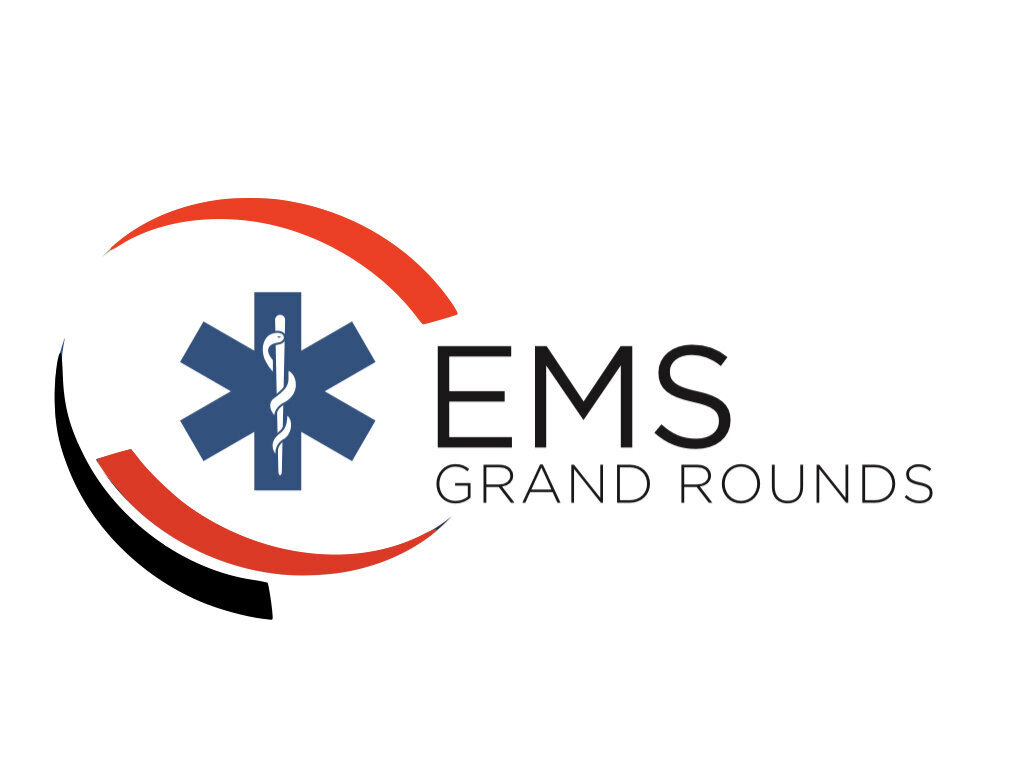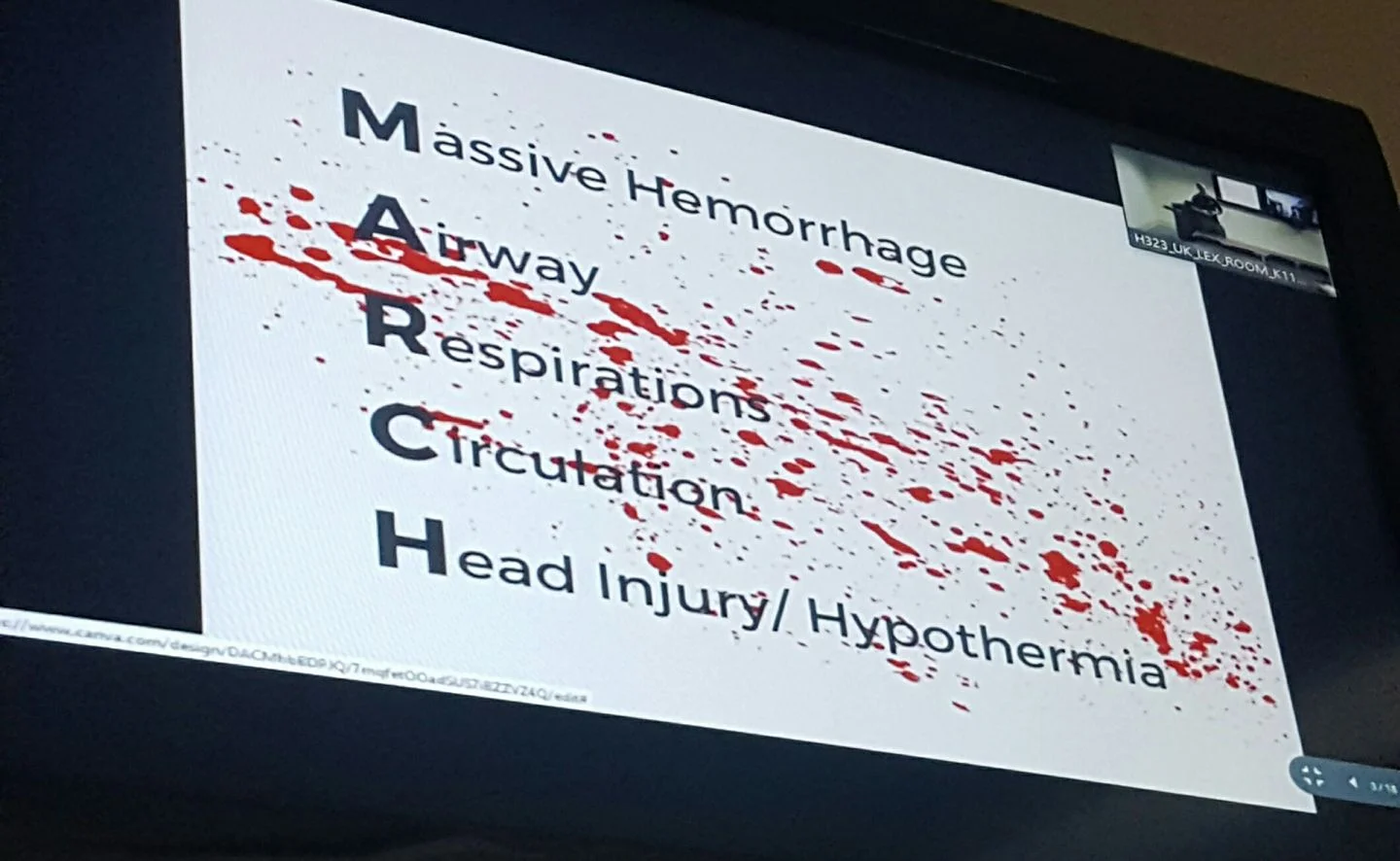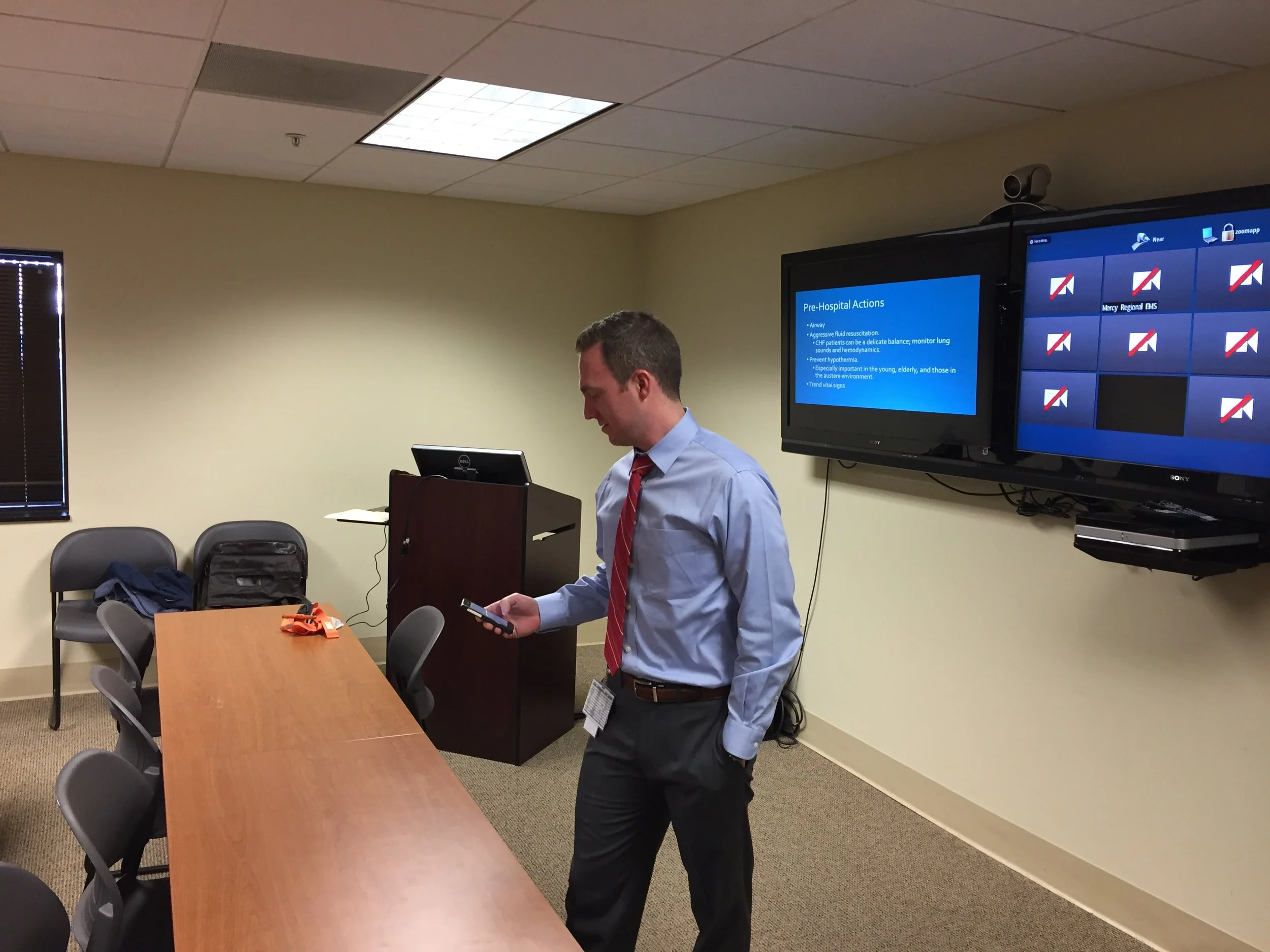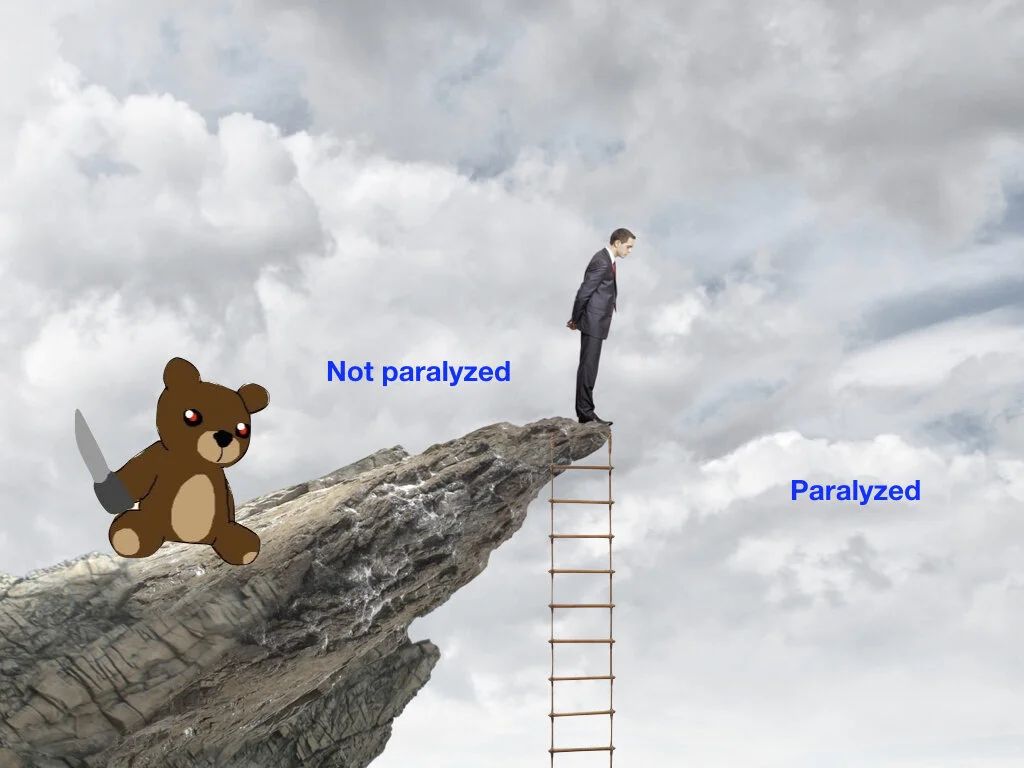February 9, 2017: Cold Weather, Hemorrhage Control, Chest Pain, OB
Cold Weather Emergencies
Cold weather injuries happen to people who are either too drunk, too crazy, or too injured to come in out of the cold. Exposure injuries can be broken down into the non-freezing and freezing injuries. Non-freezing injuries (chillblains, immersion foot) involve contact with cold, wet or damp conditions above 32 F, and are a combination of vascular spasm and ischemia. Treatment acutely is warming, protecting with dry dressings, and avoidance of the cold. Freezing injuries (frostbite) occur when the skin actually drops below 32F. Frostbite is graded like a burn depending on how deep tissue has frozen: 1st degree= superficial layers, 2nd degree= into deeper skin layers, 3rd degree= into capilaries and deepest skin layers, 4th degree= into fat, muscle, bone, etc. It's a combination of the actual cellular damage from freezing AND the inflammation etc that occurs after the area is rewarmed that causes damage, so the key to treatment is to only have rewarm them once- once they are unfrozen, prevent them from freezing again at all costs. Don't use hot air to rewarm- make a water bath of about 104 F water and soak in that. Hypothermia occurs at less than about 95-96F. Treatment for hypothermia is to aggressively warm the patient (without causing burns). Naked in room temperature air won't help; warm IV fluids won't really help, they just don't hurt as much; warm blankets won't really help; regulated forced air blankets (Bair Hugger) will help, and can be used in many ambulance configurations. Barring that, the best treatment is to go to the hospital where other stuff (warm NG lavage, warm ventilated air, thoracic lavage, bypass/ ECMO) can be done. Defib these people once if indicated, then just do compressions until you get them warm. Resus drugs (epi etc) +/- . Once a patient reaches 90 F or higher, dysrhythmias are unlikely and the patient can be considered warm and dead. Submersion injuries occur in toddlers and the penis carrying population. C spine injury is uncommon in submersion injuries- basically everything else should take precedent over immobilization. Drowning is a pulmonary problem- think ABC in arrest rather than CAB.





